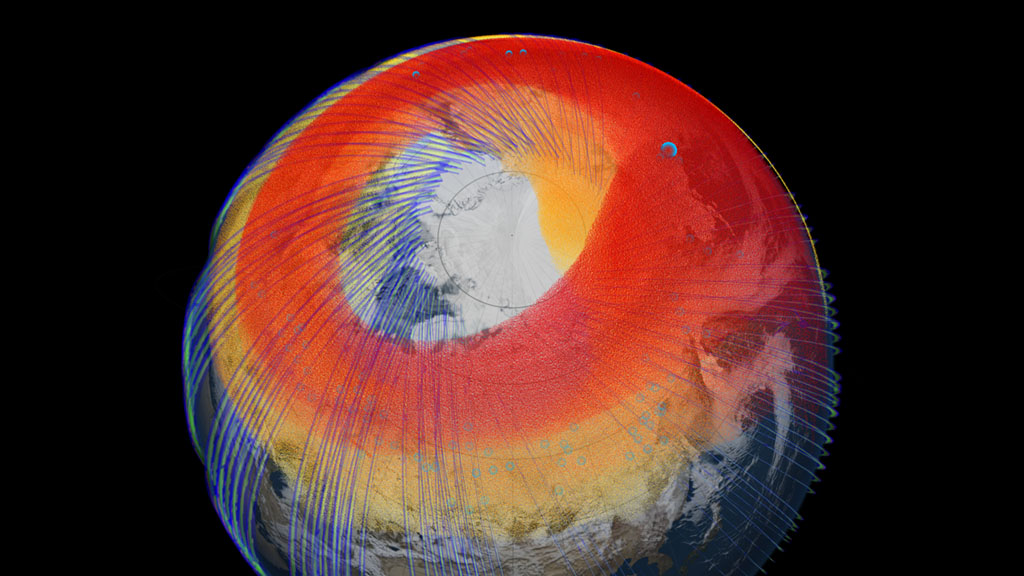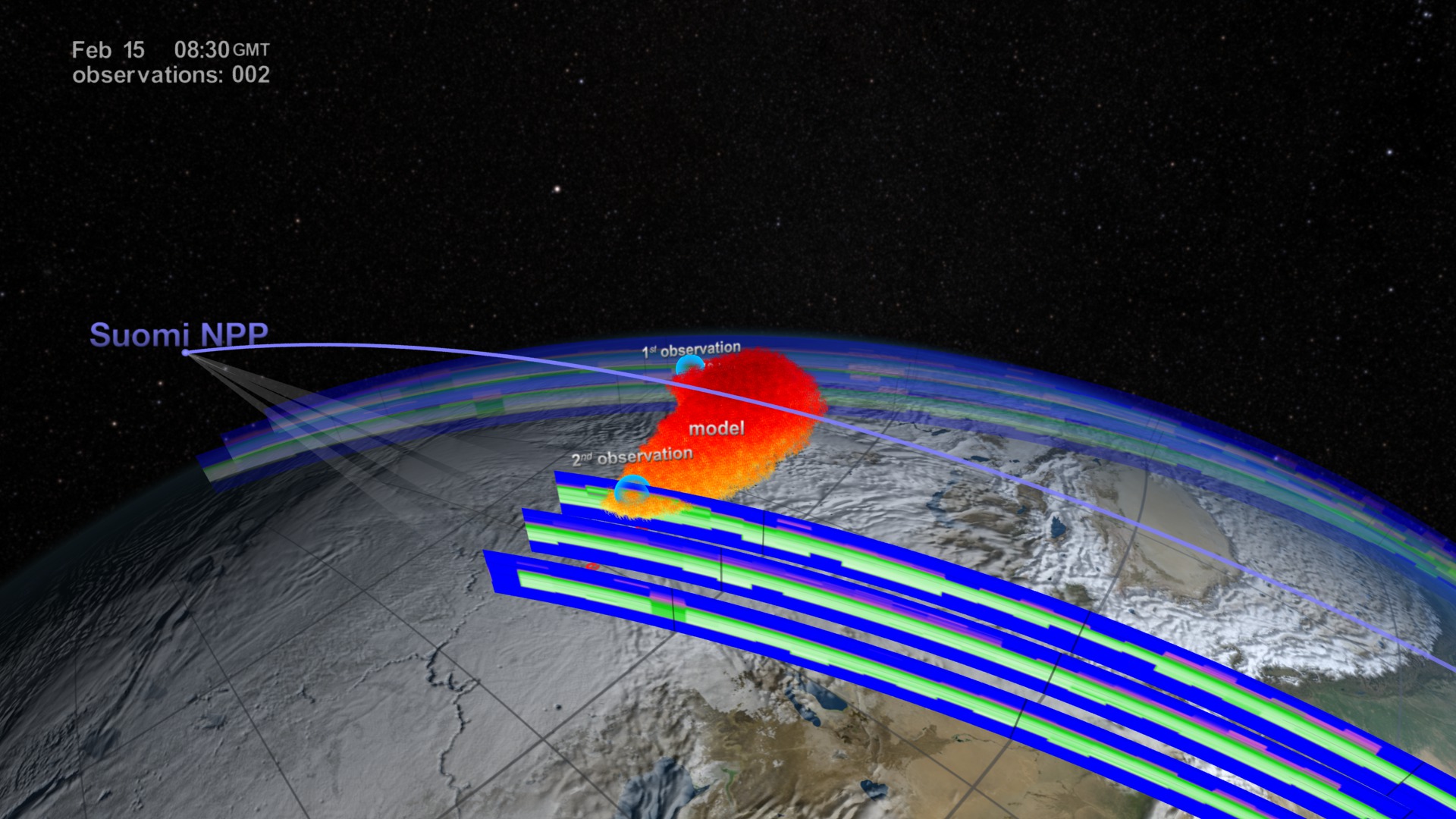The Aftermath of the Chelyabinsk Meteor as seen by NPP
The NPP satellite is a prototype of the next generation polar orbiting JPSS series of satellites. NPP provides scientists and weather forecasters with critical continuity of data allowing them to study long-term climate changes and provide improved weather forecasts. The highly accurate five instruments on board NPP have already proven to deliver an exceptional quality of data thus continuing the legacy of satellites like Terra and Aqua.
Shortly after local sunrise on February 15th of 2013, a meteor as big as a building reached Earth’s atmosphere and produced a massive explosion above Chelyabinsk, a densely populated Russian metropolis. The highly sensitive OMPS instrument on board NPP observed the plume from the explosion 1,100km eastward. Scientists used the data from this first observation and ran two NASA models to project the path of the plume. The results show that the plume’s higher layer would move ahead of the lower layer due to the difference in wind velocity at higher and lower altitudes. The models also showed that the plume would circumnavigate the entire globe and return to Chelyabinsk by February 19th, 2013. As more OMPS observations came in, it was clear that they coincided with the projected path perfectly. The results from this study proved the accuracy of the models as well as the unprecedented sensitivity of the OMPS instrument. The OMPS instrument was able to detect remains of the plume months after the initial explosion, which helped scientists track and study the plume for a long period of time. Since the Earth is constantly impacted by meteoric debris, an instrument like OMPS gives the scientists hope that in its 5-year design lifetime, they will better understand the effect of meteors and particles on the stratosphere, as well as the chemistry of our stratosphere and atmospheric ozone layer.
A meteor weighing 10,000 metric tons exploded only 23km above the city of Chelyabinsk in Russia on Feruary 15, 2013. Unlike previous such events, this time scientists had the highly sensitive OMPS instrument on NPP to deliver unprecedented data and help them track and study the meteor plume for months. This video shows how accurately the model prediction coincided with the satellite observations.
For complete transcript, click here.
For More Information
Credits
Please give credit for this item to:
NASA's Goddard Space Flight Center
-
Animators
- Greg Shirah (NASA/GSFC)
- Horace Mitchell (NASA/GSFC)
-
Video editor
- Silvia Stoyanova (USRA)
-
Narrator
- Mike Velle (HTSI)
-
Producer
- Silvia Stoyanova (USRA)
-
Scientists
- Paul Newman (NASA/GSFC)
- Nick Gorkavyi (SSAI)
- Arlindo M. Da Silva (NASA/GSFC)
- Didier Rault (USRA)
-
Project support
- Swarupa Nune (Vantage)
-
Writer
- Silvia Stoyanova (USRA)
Release date
This page was originally published on Wednesday, August 14, 2013.
This page was last updated on Wednesday, May 3, 2023 at 1:51 PM EDT.
Missions
This visualization is related to the following missions:Series
This visualization can be found in the following series:Tapes
This visualization originally appeared on the following tapes:-
Russian Meteorite
(ID: 2013070)
Monday, July 29, 2013 at 4:00AM

